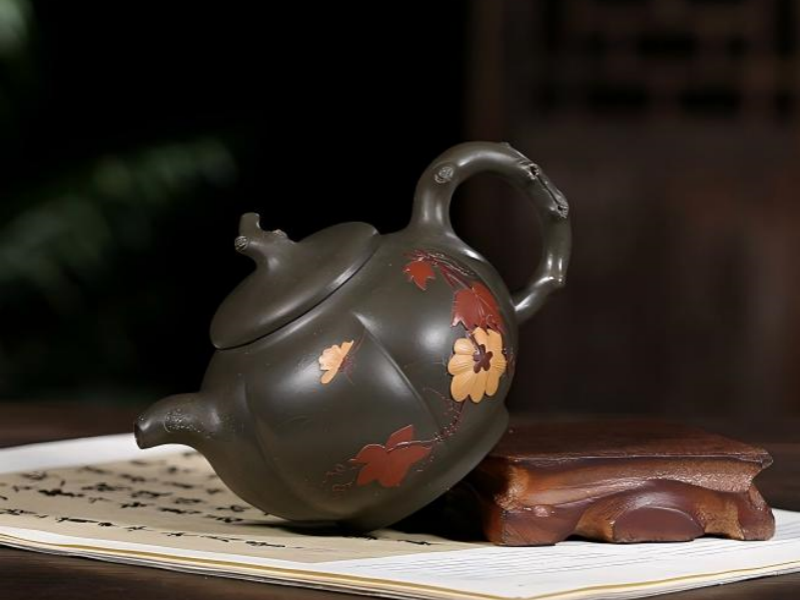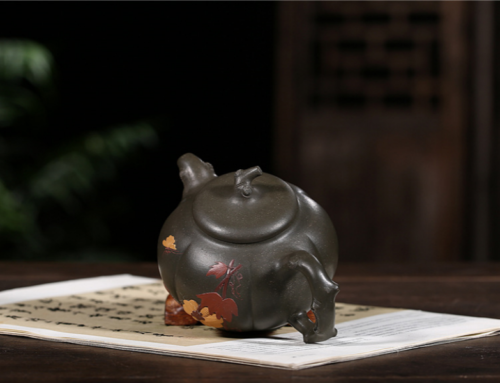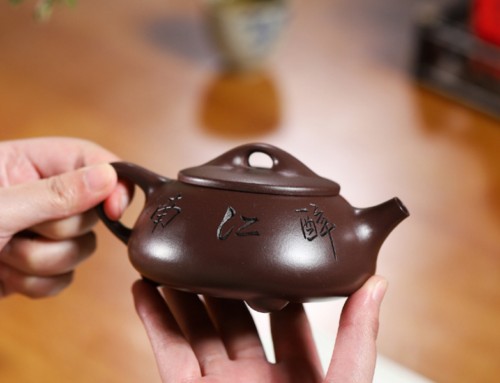Chinese Yixing Teapots: The Ideal Choice for Tea Brewing
Chinese Yixing teapots have been agreed as the ideal.
Introduction
For centuries, Chinese Yixing teapots have been recognized as more than merely teapots. Crafting with the unique clay material from Yixing, Jiangsu Province, Yixing teapots combine artistic, practical, and collectible characters, becoming the handy representations of art in tea tulture. Thanks to the unique ability to improve the taste and flavor of tea, Yixing teapots are often associated with the higher taste of drinking tea. Dating back centuries, ancient Chinese Yixing teapots inherit long traditions to not only honor the craftsmanship, but also embrace the art of drinking teas.
Yixing teapots are of the highest quality because of the special clay that is used to construct them: Zisha clay. This clay contains unique properties that allow tea to steep perfectly, from heat retention to porosity, while also keeping the essence of previous teas steeped within the walls. They are usually created in elaborate designs and completely by hand: dependent on the great skill of a talented artisan. This gives them further cultural significance as they become a true monument of the Gongfu tea spirit and the time-honored Chinese handcraft tradition.
Whether you’re a tea lover or a collector, understanding the history, craftsmanship and benefits of Yixing teapots will help you appreciate the timeless elegance of these teapots. In this guide, we’ll unpack the origins, materials, benefits and care of Yixing teapots in detail to learn the full story behind these iconic teapots, exploring why these teapots are truly what tea lovers dream about.
The Origin of Yixing Teapots
Where does the Yixing Teapot come from?
Yixing teapots are made in Yixing, a city in Jiangsu Province, China, that is known for its deposits of Zisha clay. Characterized by its porous nature and high, “purple sand clay,” Yixing clay can only be found in this region. Mineral-rich composition, Zisha clay improves flavor and adds complexity to the tea-drinking experience.
The history of Yixing teapots originates in the Song Dynasty (960–1279 CE), when artisans first began using this special clay to make teapots. These clay teapots became common in Chinese tea culture over the centuries for both their usefulness and their appearance. The clay is particularly appropriate for teaware because it absorbs some of the flavors and aromaof tea that is brewed in it, which results in the gradual development of a more intense flavor that further enhances the tea brewed subsequently.
Unique properties of Yixing clay
Zisha clay distinguishes itself through it sporosity and the distinctive heat re-tionproperties. Yixing teapots are unglazed, andover time, because the clay is porous,they absorb the flavour, smell and color of tea.Eventually, Yixing teapots develop aseasoning from repeated use that retains the color, flavor, and smell of the tea. This is why connoisseurs recommend using a dedicated teapot to enjoy the enhanced flavours accumulatedfrom prior tea brewings for a particular tea.
The clay also consists of other minerals such as quartz, kaolin, mica, and iron oxide, and its use can be traced as far back as the Song dynasty, the times of development of the Yi Xing teapot. The materials used to make Yixing teapots are of high importance, since their unique properties make Yixing stoneware teapots an optimal vessel for Gongfu tea brewing method (Kung Fu tea ceremony) and for teas that use a higher temperature to brew. The clay used to make Yixing teapots sensibly affects the taste of tea when compared to tea made in common teapots, due to its porous nature and heat retaining properties. In brewing that requires carefully controlled conditions, a pot made from Yi Xing clay can make a stunning contrast, especially that brewing is often done for more than one steeping. The semi-porous nature of Yi Xing teaware being conducive to producing the best results when using
Yixing Teapots are not merely utilitarian objects; they are also a significant part of Chinese material culture and history. Their origin in Yixing and their unique Zisha clay has made them an appropriate icon of the heights of Chinese tea culture.
Craftsmanship and Materials
How are Yixing teapots made?
Making Yixing teapots is an elaborate process that requires artistic talent, skill, and experience in crafting genuine Yixing teapots, as opposed to machine production. Genuine Yixing teapots are made by artisans who have had years of training in the art.
The teapots are shaped by hand by skilled artisans, with the traditions of this ancient technique being passed down from generation to generation. This ensures that each teapot is unique, and they can be finished with intricate designs reflective of Chinese culture, such as dragons, flowers or landscapes and some advanced artisans even carve intricate patterns or inscriptions into the teapot prior to its firing making them a form of art in themselves. After shaping the teapot the artisan fire the clay in the kiln at a high temperature, which hardens the clay and brings out the natural colors of the clay.
The craftsmanship of Yixing teapots is very famous in China and there have been many famous craftsmen whose teapots can sell for thousands of dollars each in the market. Yixing teapots are commonly used as an item of art with great value beyond that of tea to Chinese tea culture. Not restricting solely to the tea table.
Types of Yixing clay

Each type of clay will react differently with tea. Some teas might be better suited to one type of clay, and others to another. A teapot will slowly acquire the taste and smell of the tea that has been brewed in it, so the Yixing teapot is usually dedicated to one type of tea or sometimes even one special type of tea. The Yixing teapot is considered by some connoisseurs as an instrument to discern good tea; over time, the teapot, along with other vessels made from purple sand, absorb the aroma of tea and in doing so, Yixing teapots take on the flavour of tea. With continued usage, less tea leaves and shorter steeping time may be used, which produces a stronger tea. Every clay type will react differently with tea, some teas are better suited to certain clays and others not; slowly a teapot will acquire the taste and smell of tea it brews, therefore the Yixing teapot is often dedicated to a particular type of tea, or sometimes even a particular variety of tea.
Unique aspects Yixing teapots are prized because
Additionally, Yixing teapots have excellent heat retention, meaning that they ensure the tea is evenly and thoroughly brewed. The mineral composition of the Yixing clay makes it more durable: it doesn’t crack or crisp even when used to brew tea for years. For such properties of Yixing, they are not only excellent teapots, but a real sign of quality and high status in Chinese tea culture.

Why are the Yixing teapots ideal for tea brewing?
Yixing teapots are cherished for their ability to improve the tea-drinking experience, offering advantages beyond their visual appeal. The porous nature of the Zisha clay allows the teapot to absorb the oils and flavours of tea, creating a seasoned vessel that enhances subsequent brews. This means that over time, your Yixing teapot develops a subtle yet rich patina, reflecting its history of use and deepening the complexity of the tea brewed within it.
Another benefit is the teapot’s heat retention properties. Since the clay remains porous, the heating retaining quality means that tea can be brewed more evenly and at the correct temperature. This comes in especially handy when brewing tea in Gongfu style, a method of tea preparation which requires closer attention to temperature control. The porous qualities of the material also means it allows the tea to “breathe” in the teapot, unlocking more complex flavors and aromas which would not otherwise be possible.
Best teas to brew in Yixing teapots
To truly enjoy Yixing teapots to their full potential, many tea connoisseurs designate a single teapot for each kind of tea to keep the flavors from each type of tea from interfering with one another and to keep them from becoming muddled. By doing so, each teapot collects the essence distinct to that particular kind of tea and loses some of its porosity. The following is a list of some teas which are particularly well suited to brewing in Yixing teapots.

And while Yixing teapots are optimal for such teas, they are usually not used for most kinds of green or white tea, which are typically brewed with lower-temperature water and impart delicate aromas and flavours that may be overshadowed by the higher density of aroma retained in the high-fired and somewhat porous Yixing teapot, not to mention that the high clay-to-water contact may be detrimental to the subtle character of such teas.
Optimising the flavour of the tea
The concept of seasoning a Yixing teapot is somewhat analogous to a Chinese zisha clay speciality. With repeated use, the Yixing teapot will absorb the tea oils steeped in it, creating a thin coating. With repeated use, teas brewed in a well-used Yixing teapot will acquire a stronger aroma and flavour, creating a more complex cup of tea over time. The Yixing teapot is like a culinary cast-iron skillet that gets better with use. The more the Yixing teapot is used for making tea, the better the enhanced vitality of the tea will be.
Beyond their flavor contribution, Yixing teapots offer a tactile and visual experience that enhances the overall pleasure of tea-drinking. Their warm, earthy tones and uniquely handmade forms invite interaction and mindfulness, turning the simple act of steeping tea into a showcase of craft and art.
What to look for when buying a Yixing teapot
Choices, choices. Buying a Yixing teapot can be an exciting venture, but it’s important to bear a few key factors in mind to ensure you’re getting an authentic and useful piece. Authenticity is key, as the market is flooded with imitations that do not possess the unique properties of true Yixing clay. Check that the teapot comes from Yixing, Jiangsu Province and see if you can find out the name of the artisan or manufacturer. Many genuine Yixing teapots come with a certificate of authenticity or a maker’s mark, indicating their provenance.
When it comes to the design of a teapot, size and shape matter. Yixing teapots come in a variety of sizes, but they are most commonly found in sizes that range from 100ml to 300ml. Smaller Yixing teapots are preferred for Gongfu tea preparation, where tea is prepared in smaller amounts and served in several rounds. The formation of the teapot can also affect the brewing process. For instance, a round teapot is better for a tea with large leaves, whereas a more flat teapot is better for a tea with tightly rolled up leaves.
Before purchasing a teapot, check for quality and craftsmanship. Look for well executed seams, good fit with the lid and even firing. It should feel sturdy but not overly heavy and free of obvious flaws such as cracks. Many connoisseurs suggest buying only from reputable dealers and/or directly from artists from reputable outlets.
Design and functionality
The beauty of a Yixing teapot often reflects the artistry and heritage of its maker. Many works are based on traditional Chinese iconography, such as the dragon, flowers, or a written inscription. Aesthetic concerns, however, should not trump performance; make sure that the teapot pours well from the spout, and that the lid fits tightly enough to retard the escape of heat during brewing.
If you want a teapot that’ll best compliment your tea-drinking habits, consider what you’ll be using it for. If you mostly make oolong tea, you could opt for a Zisha clay teapot to bring out your tea’s floral and fruity flavors. Alternatively, a Zhuni clay teapot best unlocks the bold and earthy flavors of Pu-erh tea.

Budget vs. premium teapots
Yixing teapots are available at a wide range of prices. From budget-friendly teapots for beginners to premium teapots by master artisans. While more expensive teapots offer superior craftsmanship and artistry, they may not be necessary for more casual tea drinkers. Ultimately, you must consider your budget and your own tea-drinking habits when choosing a teapot.
For collectability purposes, it might be worth spending a bit more for a premium option, which usually means more ornate designs, rarer clay types, and the mark or signature of a well-known craftsperson. If you’re a beginner to Yixing teapots, the mid-range option should be good for getting both good quality and good value.
In conclusion, buying the right Yixing teapot is a delicate process that requires a good balance of authenticity, design, function, and budget. By taking the effort to evaluate these factors, you will be able to own a Yixing teapot that not only inspires and enhances your tea-drinking experience, but also a durable companion that will remain an excellent artifact for generations to come.
How to Care for Your Yixing Teapot
Yixing teapot maintenance tips

Proper care is required to preserve your Yixing teapot‘s functionality and beauty. Unlike other teapots, Yixing teapots have some unique care requirements due to their porous clay and seasoning properties. By following these steps, you can maintain the integrity and performance of your Yixing teapot, ensuring it lasts for years to come.
Seasoning your teapot
Seasoning a Yixing teapot is a traditional practice that enhances its ability to brew tea. This process allows the teapot to absorb the essence of tea, creating a seasoned vessel that improves the flavor over time. Here’s a step-by-step guide to seasoning your teapot:

The seasoning process takes time and the teapot will be further enhanced as time passes. A soft patina will, eventually, form on the teapot that will become a mark of the history of the tea that it has brewed, and enrich the tea-drinking experience. Good care and seasoning are important to the preservation of a Yixing teapot, which is itself a demonstration of excellence.
Conclusion
Chinese Yixing teapots represent the art and the science of teapots at their highest level. From their works of Chinese potters in Yixing in Jiangsu Province in China through their unique Zisha clay material, these one-of-a-kind teapots represent the summit of Chinese teapot evolution. Whether it is in its creative and artistic design, craftsmanship, tea brewing ability, origins, the ability to enhance the taste and fragrance of tea, they are the ultimate representation of teapot tradition.
Whether you’re an experienced tea drinker or looking to widen your tea horizons, these teapots will offer an experience like no other. Their capacity to become “seasoned” over time, along with their durability and aesthetic appeal, makes these pieces an asset to any tea collection. Conditioning your teapot and making the care of your tea wares part of your practice will only make both better over time, and you may find that you end up with a routine of mindfulness and connection in your tea practice as well.
As tea culture expands throughout the world, Yixing teapots are increasingly cherished for their profound cultural significance as well as practical benefits. Having gained more knowledge about Yixing teapots, you join the ranks of tea lovers who appreciate the unique appearance, texture, and essence of Yixing teapots.












